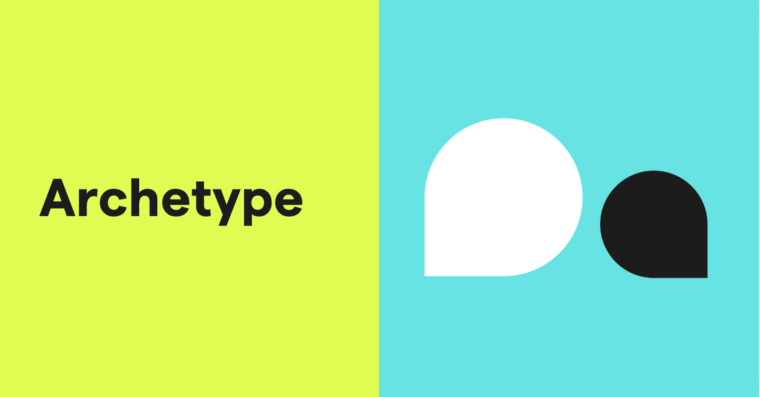
Key takeaways:
- Allegory uses characters, events, or settings to represent larger concepts or moral lessons.
- Allegories take various forms, such as fables, parables, and sustained allegories.
- Unlike metaphors or allusions, allegories are full stories that use symbols to convey larger ideas or societal issues.
Stories can do more than entertain: They can reveal deeper truths about the world around us. Allegory is a literary device that allows writers to craft narratives in which characters, events, and settings carry a surface-level meaning and also a deeper, symbolic significance, inviting readers to explore these layers of meaning.
Like an extended analogy, allegory draws readers in, adds personality to the writing, and connects the story to bigger real-world issues by exploring complex topics in an accessible way.
In this post, we’ll discuss different types of allegory and show you how to use this device effectively in your writing.
Table of contents
Allegory compared to other literary devices
Types of allegory
Allegories appear in many forms, from ancient stories and religious texts to modern political commentary. While they come from different times and cultures, all allegories use symbolism to express deeper meanings.
| Type | Definition | Example |
| Religious | Allegories that draw from religious texts or themes, often conveying spiritual or moral lessons | The Chronicles of Narnia, by C. S. Lewis, uses Christian symbolism to explore good, evil, and redemption. |
| Classical | Ancient stories from Greece or Rome, often passed down orally, that teach moral or philosophical ideas | Aesop’s Fables use animals and simple plots to convey values like honesty and humility. |
| Medieval | Allegories from the Middle Ages, often religious, using symbolism to guide moral behavior | Everyman is a morality play where characters represent abstract ideas like death and good deeds. |
| Modern | Allegories from the 18th century onward that address social, political, or psychological issues | The Scarlet Letter, by Nathaniel Hawthorne, critiques Puritan society’s moral judgment and individual shame. |
| Sustained | Long-form allegories where nearly every element—character, setting, event—represents a deeper meaning | Lord of the Flies, by William Golding, uses a deserted island and its characters to explore the breakdown of civilization and human nature. |
| Fables | Short tales, often with animal characters, that present a moral lesson | The Tortoise and the Hare teaches that steady effort wins over arrogance. |
| Parables | Brief stories featuring human characters that illustrate spiritual or ethical truths, often religious | The parable of the Good Samaritan teaches compassion for others. |
Uses of allegory in writing
A well-crafted allegory doesn’t need to spell out its message. When an allegory is done well, the meaning unfolds naturally and lingers with the reader long after the story ends.
Writers use allegory to:
- Explore moral, political, or philosophical themes.
- Deliver subtle social commentary through storytelling.
- Encourage deeper engagement by layering meaning beneath the surface.
Allegorical writing offers more freedom than traditional nonfiction or persuasive writing. It’s not a speech or a science lecture—it’s imaginative and layered. With allegory, you can:
- Use devices like personification, time travel, or even magic if it suits your story.
- Develop complex characters through indirect characterization.
- Build a narrative that entertains while exploring a meaningful literary theme.
Examples of allegory
Allegory allows writers to explore complex ideas through symbolism, using characters, events, or settings to represent abstract themes and societal issues.
Below are additional examples of how various works employ allegory to delve into philosophical, political, and moral concepts.
| Example | Type of allegory | Summary |
| Animal Farm, by George Orwell | Modern allegory | Orwell uses farm animals to represent figures from the Russian Revolution, showing how power corrupts. |
| Aesop’s The Goose That Laid the Golden Eggs | Fable allegory | A farmer’s greed leads to his downfall, teaching that impatience can destroy long-term gain. |
| Plato’s allegory of the cave | Classical allegory | The allegory illustrates the journey from ignorance to enlightenment through prisoners escaping a cave. |
| Piers Plowman, by William Langland | Medieval allegory | The narrative poem follows a dreamer’s spiritual journey through symbolic landscapes exploring faith and morality. |
| The Lorax, by Dr. Seuss | Modern allegory | The story critiques industrialization and environmental harm through the character of the Lorax. |
| Moby Dick, by Herman Melville | Sustained allegory | A long pursuit of a white whale symbolizes obsession, fate, and the limits of human knowledge. |
Allegory compared to other literary devices
Allegories are similar to other literary devices but work in unique ways. Here’s how allegory compares to some common devices:
| Literary device | Definition | How it relates to allegory |
| Allusion | Quick references to famous things or people | Allegories can contain allusions, but allegory itself is a complete story, unlike the brief reference of an allusion. |
| Anecdote | Short, true stories told to make a point | Allegories are fictional stories with broader meanings, not specific true examples. |
| Metaphor | Saying one thing is another to create a vivid image (“the city is a jungle”) | Allegories build meaning through extended metaphors across an entire story. |
| Satire | Using humor to criticize something | Allegories can be satirical, using symbols for broader commentary, but not all satires are allegories. |
| Symbolism | Objects or ideas that stand for something else (e.g., a dove for peace) | Allegories are built with many connected symbols to create a larger meaning. |
Introduce moral dilemmas and hidden meaning with allegory
Often, stories contain a hidden level where characters and events act as an allegory, representing bigger moral questions and deeper meanings. Unraveling these layers can offer fresh perspectives and enrich our understanding of the story and ourselves.
Keep sentences clear with Grammarly
Allegories rely on clear structure and purposeful language to deliver deeper meaning, and your writing should, too. Grammarly helps you fine-tune word choice, eliminate distractions, and ensure your message is as intentional and impactful as the stories you tell. Try Grammarly to bring clarity and precision to every line.
Allegory FAQs
Below are frequently asked questions about allegory and its use in literature.
Is an allegory the same as an extended metaphor?
An allegory and an extended metaphor use symbols to convey deeper meanings, but they differ in scope. An allegory is a full story in which characters or events represent bigger ideas. For example, in Animal Farm, by George Orwell, the characters symbolize political figures and concepts.
An extended metaphor is a comparison that spans several lines or paragraphs, focusing on one specific idea rather than a full story. While both techniques add depth, allegory is broader and more complex.
How does allegory relate to rhetorical devices?
Allegory is a rhetorical device that tells a story with a deeper meaning. It’s also a type of trope because it uses symbols to represent bigger ideas. Instead of stating a message directly, an allegory encourages the audience to find meaning through characters, settings, or events.
Like a metaphor, an allegory explains complex ideas by connecting them to something familiar. This makes it a useful tool in writing and speeches when aiming to make a message more engaging or memorable.
How is The Wizard of Oz an allegory?
Frank Baum’s book The Wonderful Wizard of Oz is often seen as a political allegory about late 19th-century America. Dorothy’s journey through Oz reflects the struggles of ordinary people.
Dorothy travels with the Scarecrow, Tin Man, and Cowardly Lion, who many believe stand in for farmers, factory workers, and unsure political voices. The silver slippers (which are ruby slippers in the film) symbolize the debate over using silver to back US currency.
The Wizard, who seems powerful but is just an ordinary man, represents the illusion of authority. While the 1939 movie focuses more on friendship and personal growth than US currency or authoritarianism, it keeps the message that people often have more strength and wisdom inside them than they realize.






